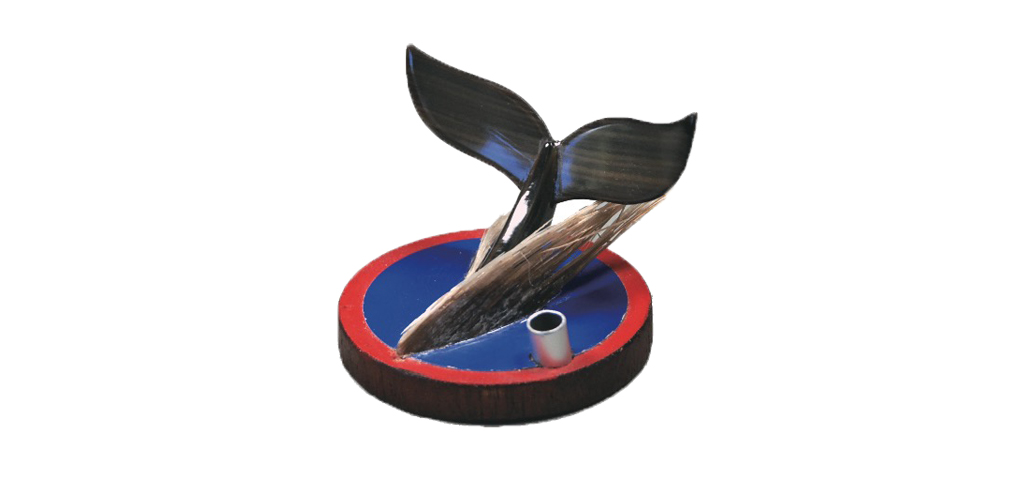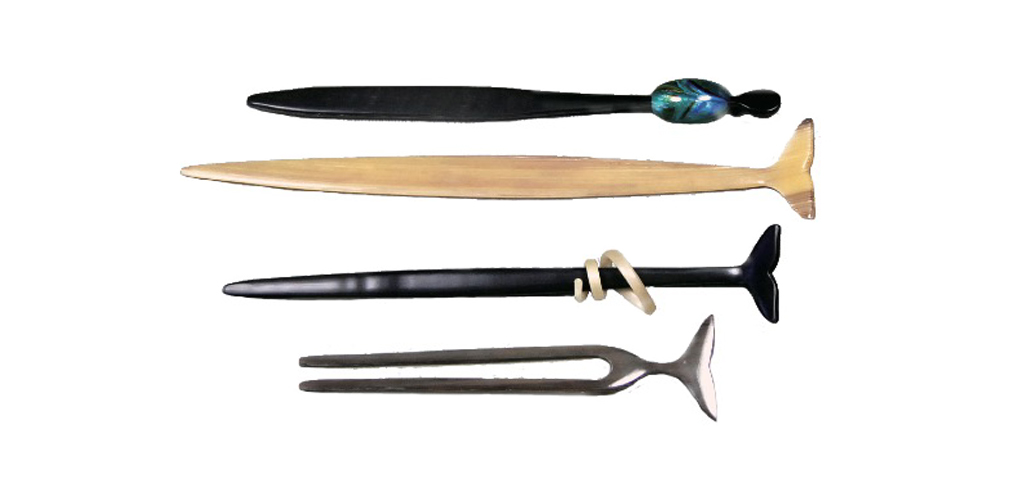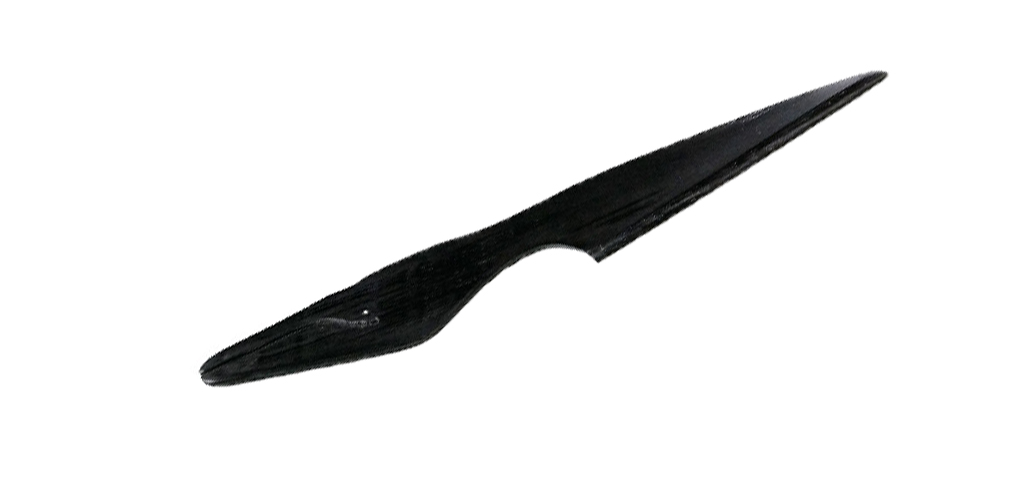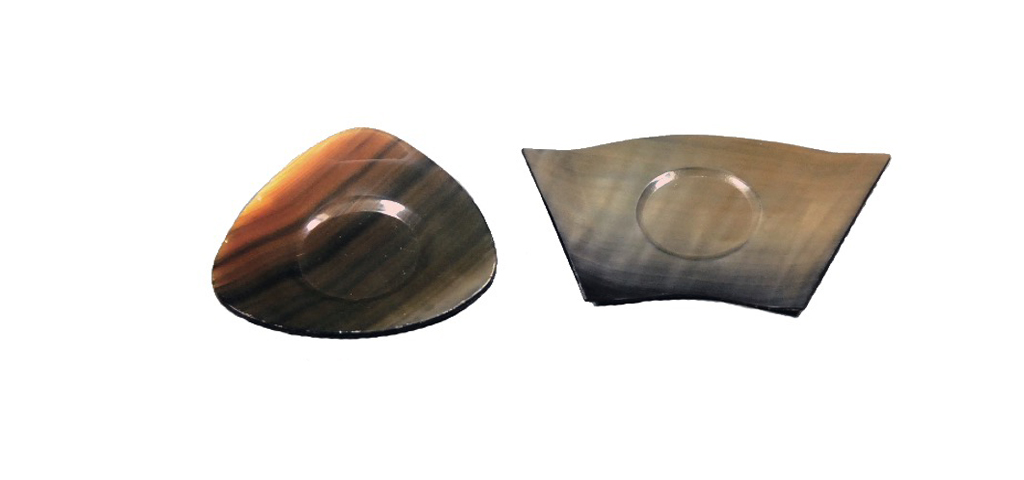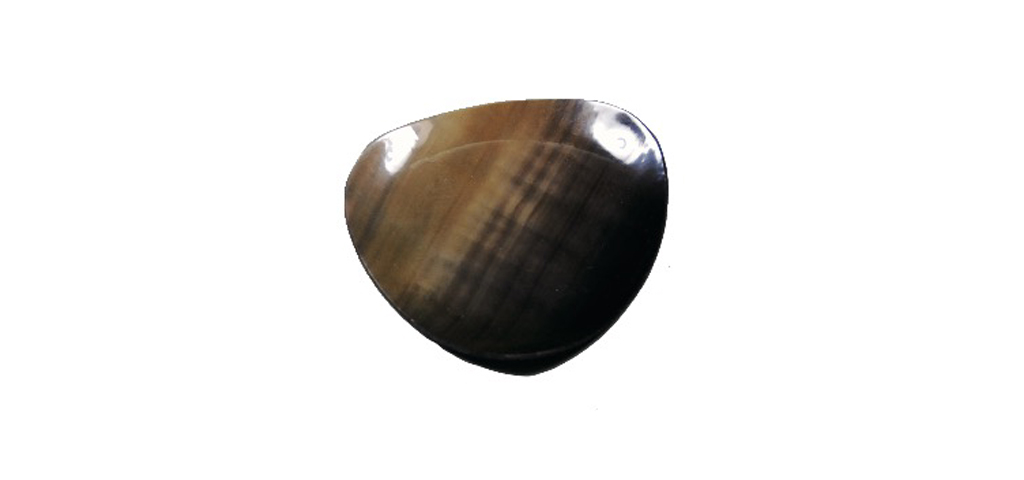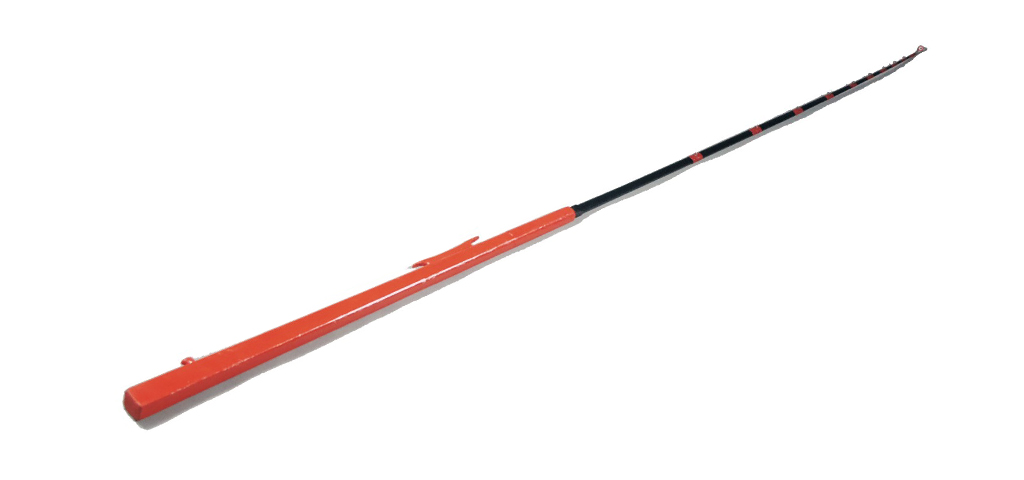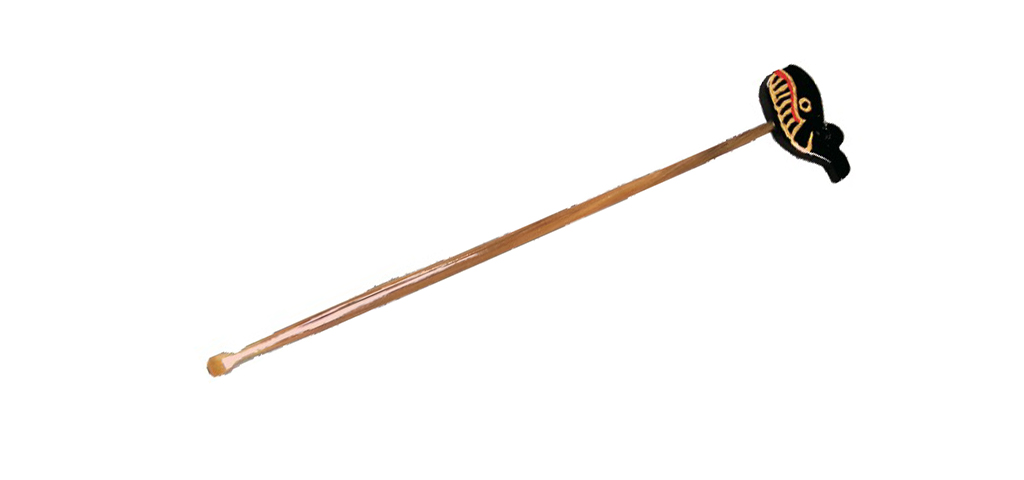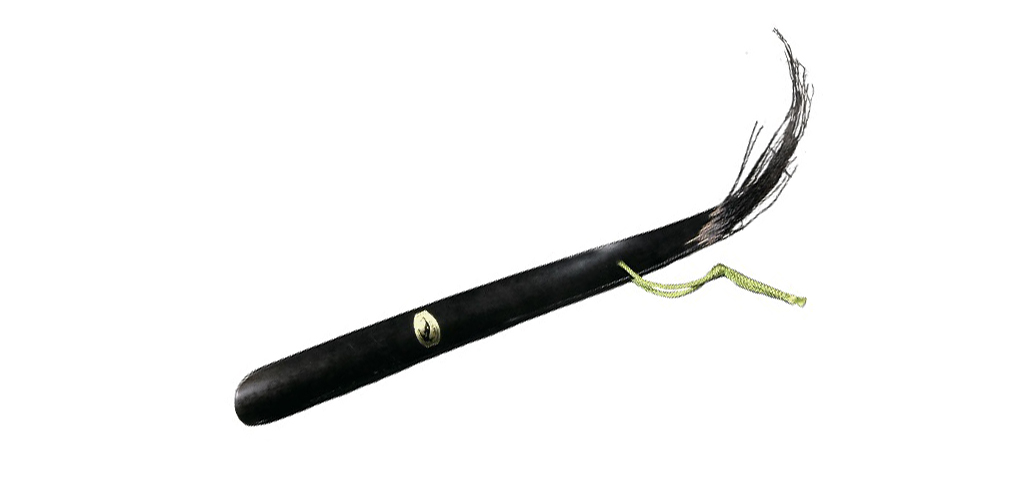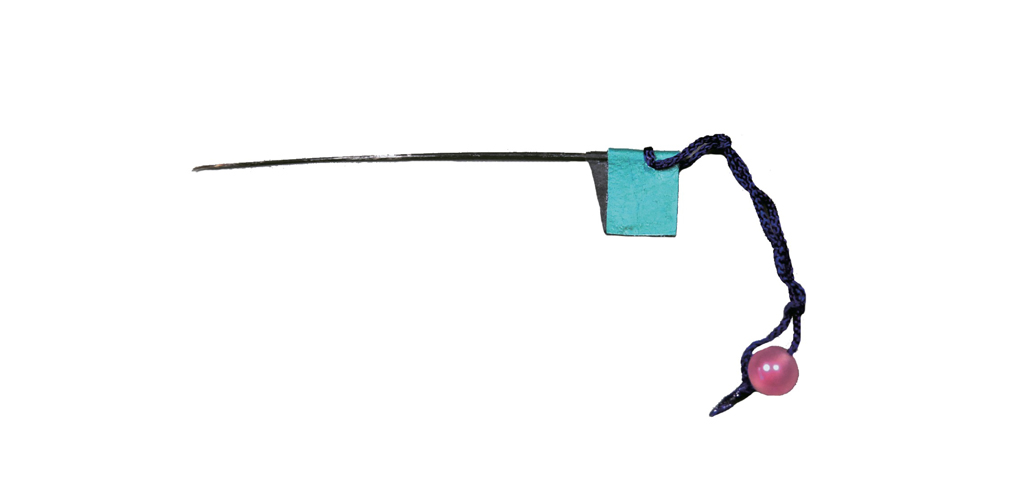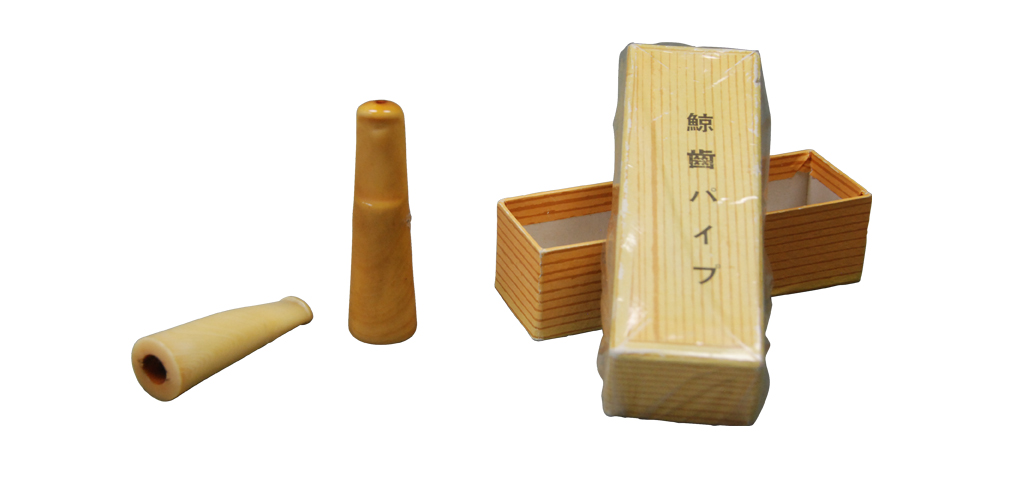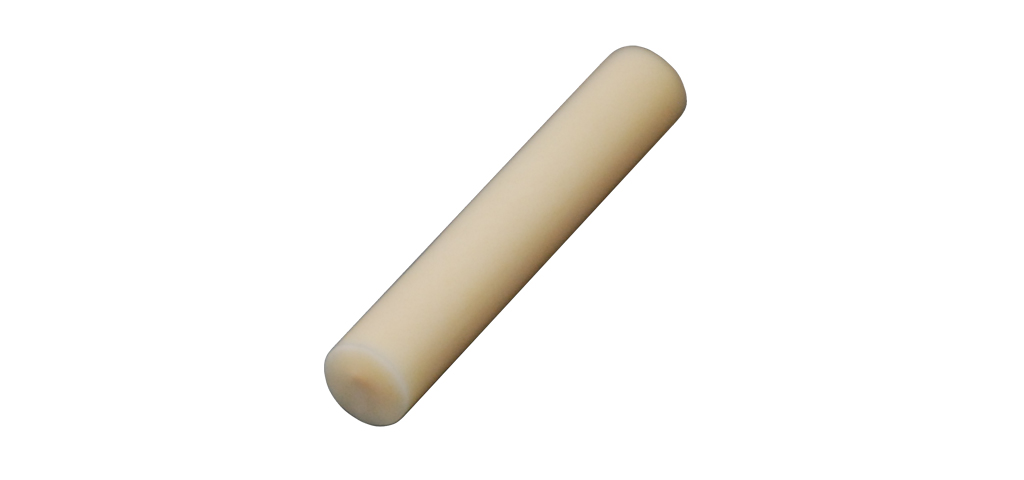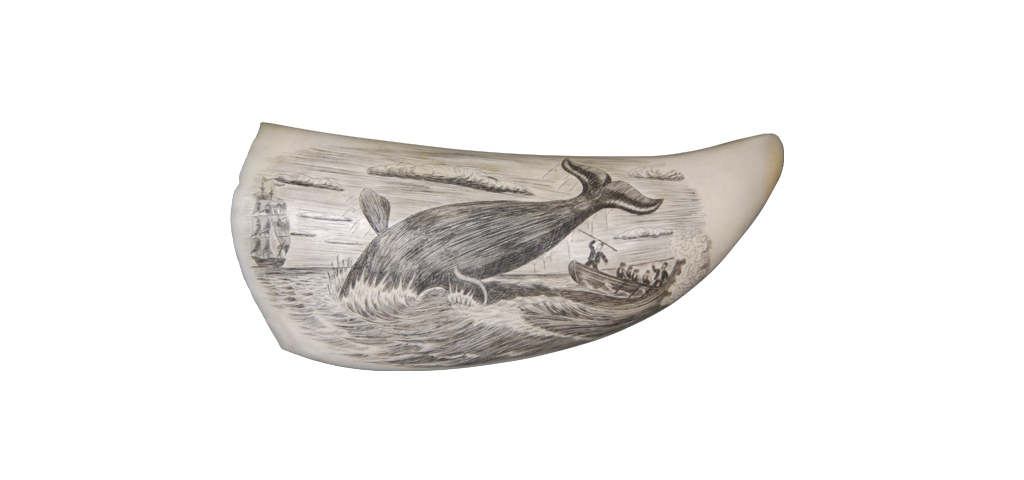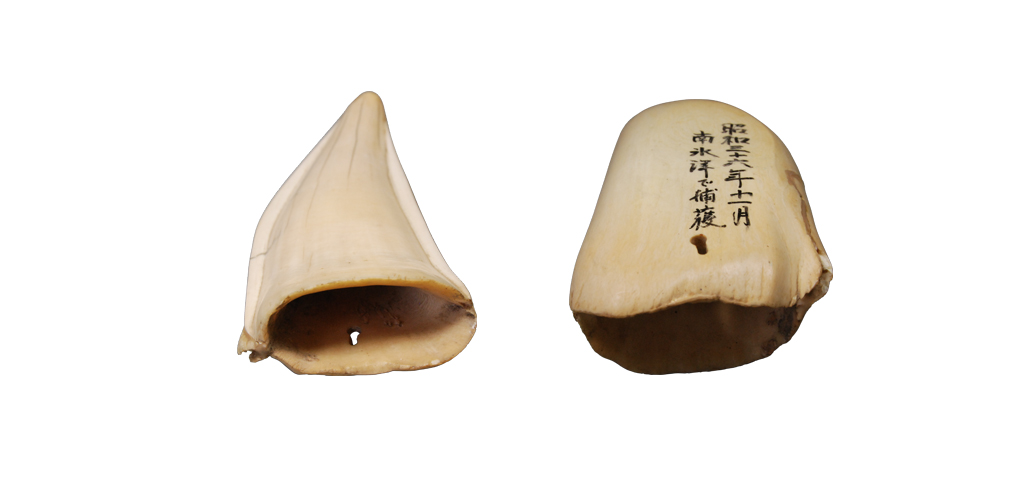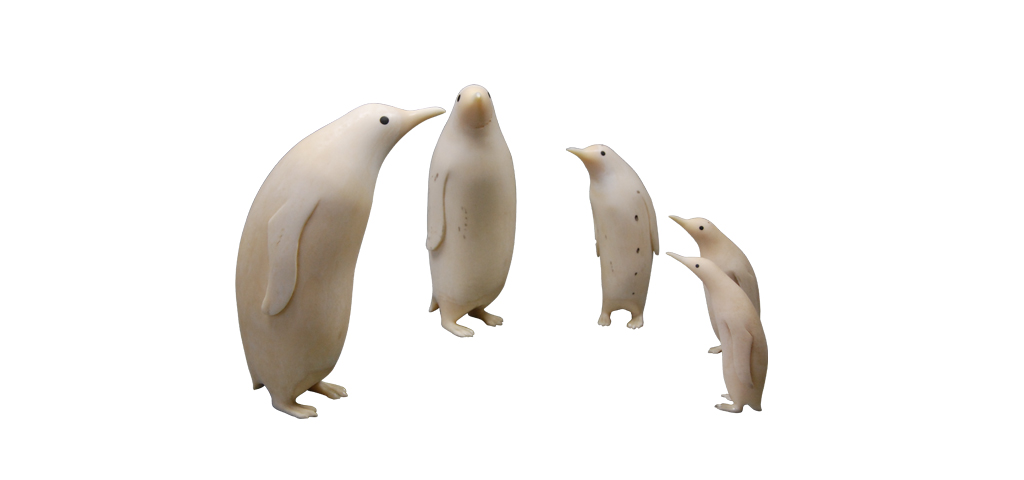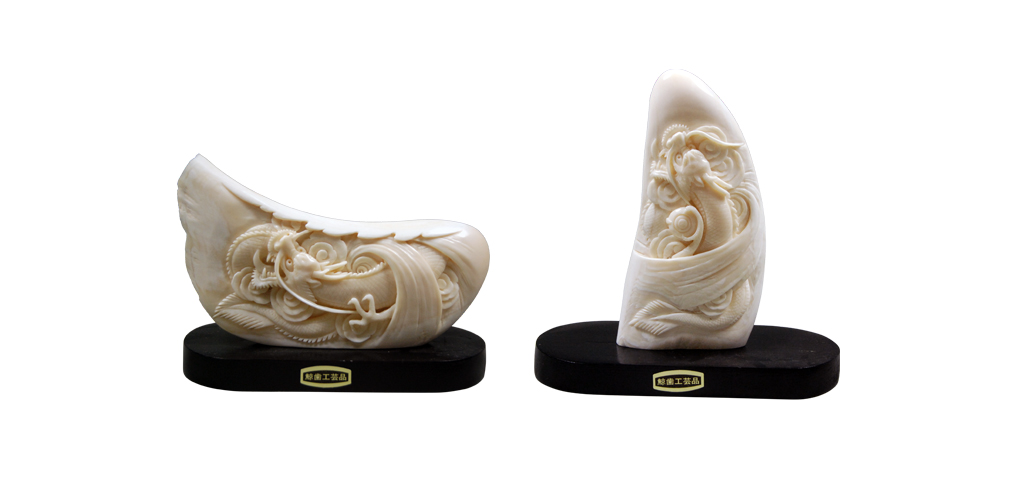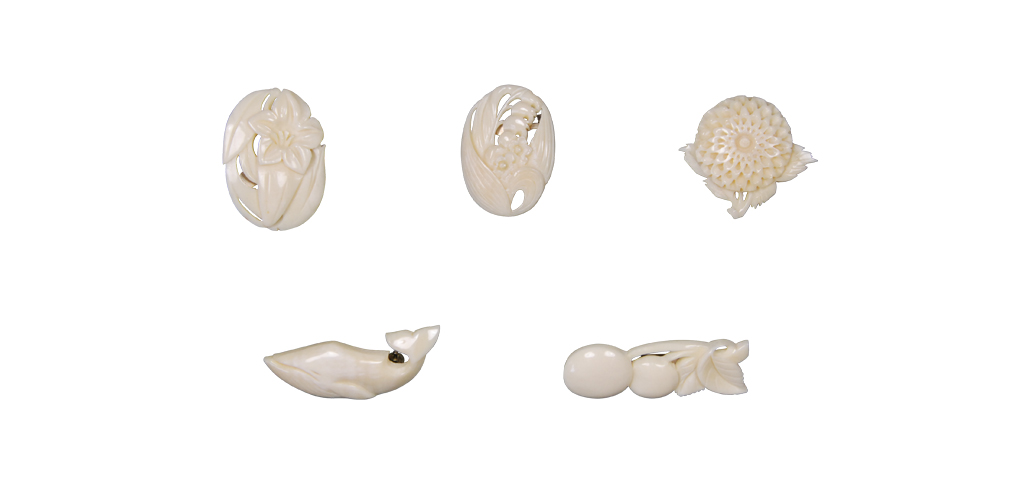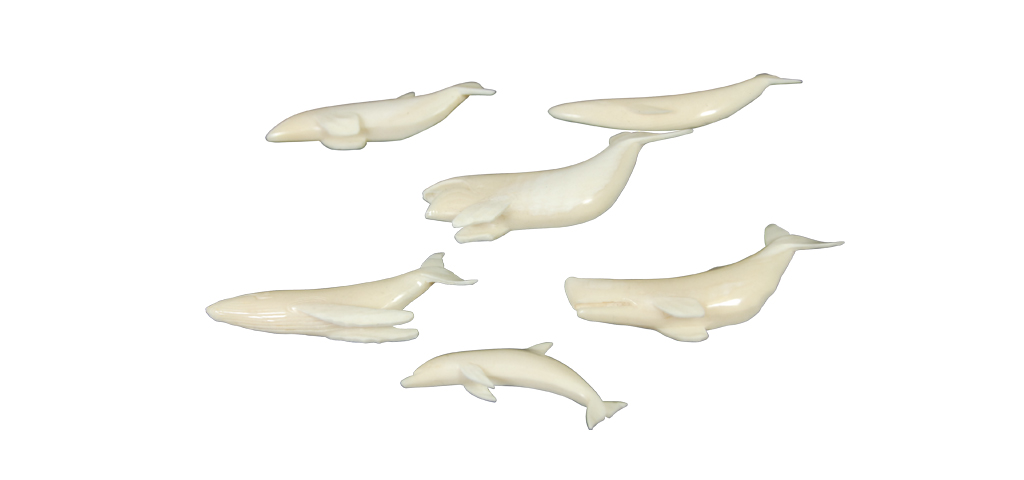- TOP
- HISTORY
- Whales in our daily life
Whale-baleen products
What is whale-baleen ?
Today, more than ten species of baleen whales are recognized worldwide. They have hundreds of baleen plates arranged across their upper jaws, and different species are different colors and shapes. While the whales are alive, their baleen is very flexible, elastic, and has a peculiar triangular shape. It consists mostly of keratin just like our fingernails and hair.
The Many Uses of Baleen
Steamed baleen is soft and can be molded into various shapes. As a result of its peculiar elasticity and stain-resistant characteristics along with its beauty similar to that of tortoiseshell, baleen products are still made in Hokkaido, Miyagi, Osaka, Nagasaki, etc. However, manufacturing baleen products requires highly experienced artisans and time, which makes it difficult to continue its production.
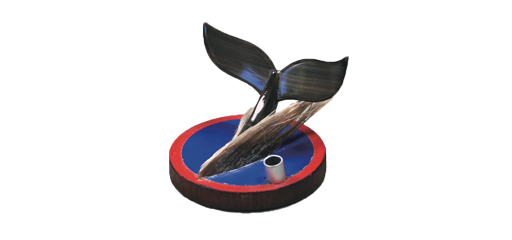 Pens stand
Pens stand
Pens stand
Made of fin whale baleen
Baleen is cut, curved, and then polished to form the shape of a whale's tail.
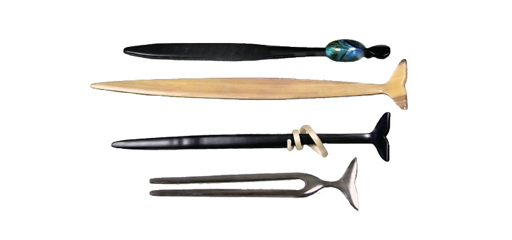 “Kanzashi”, hair ornament
“Kanzashi”, hair ornament
“Kanzashi”, hair ornament
Fin Whale Baleen
Sei Whale Baleen
Hair ornaments are delicately crafted. Fin whale baleen is a yellow-gray color, while sei whale baleen is pitch-black.
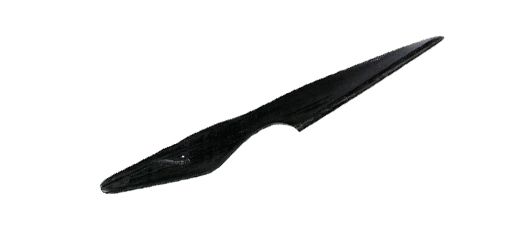 Paper knife
Paper knife
Paper knife
Sei whale baleen
This is a paper knife in the shape of a whale. The shape of a whale's head is shown on the left.
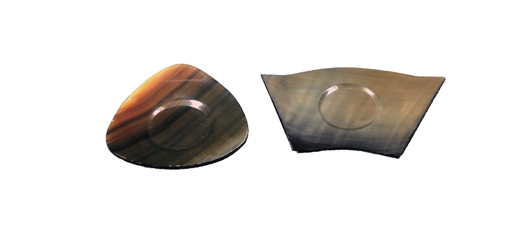 “Cha-taku” or saucer
“Cha-taku” or saucer
“Cha-taku” or saucer
Fin whale baleen
They are cut, steamed, and then pressed into shape.
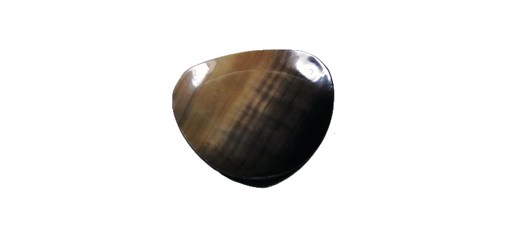 “Meimei-zara” - Serving Plates
“Meimei-zara” - Serving Plates
“Meimei-zara” - Serving Plates
Fin whale baleen
These are serving plates for dessert or snacks. They are cut, steamed, and then pressed into shape.
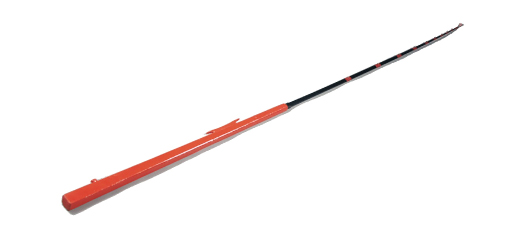 Fishing rod
Fishing rod
Fishing rod
Not available
Elastic baleen is used at the tip of the rod.
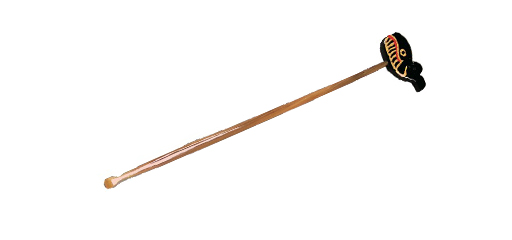 Ear pick
Ear pick
Ear pick
Handle: Fin whale baleen
Ornament: Sei whale baleen
This baleen was finely cut and carved into an ear-pick. The hand-drawn face of a whale is interesting.
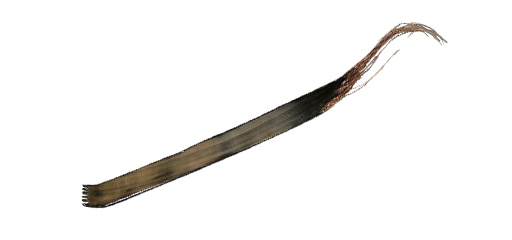 “Mago-no-te” or backscratcher
“Mago-no-te” or backscratcher
“Mago-no-te” or backscratcher
Fin whale baleen
Cut along the baleen fibers and curved at the end with slits, only great skill can produce the curve of this back-scratcher.
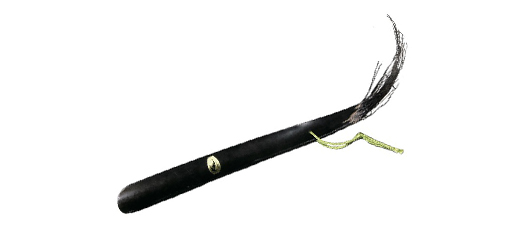 Shoehorn
Shoehorn
Shoehorn
Sei whale baleen
Sei whale baleen, with its strong yet flexible structure, made popular shoehorns.
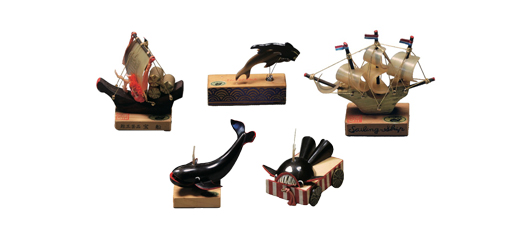 Ornaments
Ornaments
Ornaments
Fin whale baleen
The sails and the bodies of the whales and the dolphins are made of baleen. The technique behind cutting and carving baleen is masterfully done.
 Awaji “Deku” or Wooden Puppet - Head (Courtesy of Mr. Yasuhiro Ueda)
Awaji “Deku” or Wooden Puppet - Head (Courtesy of Mr. Yasuhiro Ueda)
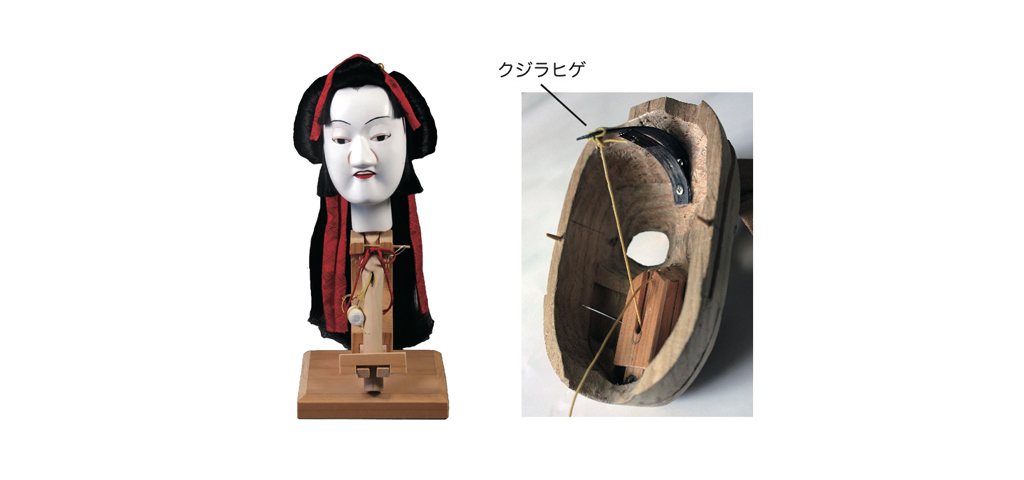
Awaji “Deku” or Wooden Puppet - Head (Courtesy of Mr. Yasuhiro Ueda)
Fin whale baleen
Awaji “deko-joruri,” or traditional puppet theater, has a 500 year history. The “tayu” (narrator), the “shamisen” (a traditional, Japanese 3-stringed instrument), and the puppet depict morality and emotions in Japanese culture. Each puppet has three puppet masters, and by moving the eyes, the eyebrows, and even the horns on their foreheads, the puppet's faces can express a variety of expressions. Baleen is used for these detailed facial movements. Two sets of baleen are shaved 1 mm thin and 1 cm wide and are used as springs and tied to the puppet’s eyes and eyebrows with silk threads, which are also used in Shamisen. Thus, pulling the silk threads moves the puppet's eyes and eyebrows. Traditionally, the baleen of the North Pacific right whale has been favored for its smooth movement; however, other baleen is also used now due to their rarity. Puppets in particular use fin whale baleen.
* Tayu: The puppet theater narrator who narrates the story and the character's emotions.
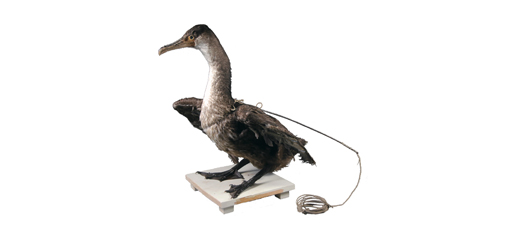 “Ukai” or Cormorant Fishing “Tsumoso”
“Ukai” or Cormorant Fishing “Tsumoso”
“Ukai” or Cormorant Fishing “Tsumoso”
North Pacific Right Whale Baleen
The “usho,” or the cormorant fisherman, uses several cormorants at the same time. “Tsumoso” is a 30 cm long baleen stick which is tied between “kubiyui” (hemp) and “tazuna” (rope). The elasticity of the North Pacific right whale's baleen was traditionally favored along the Nagara River in Gifu; however, plastic “tsumoso” has taken its place since baleen is rare and expensive today. The “tsumoso” in this picture (indicated by the arrow above) is made from the baleen of a North Pacific right whale.
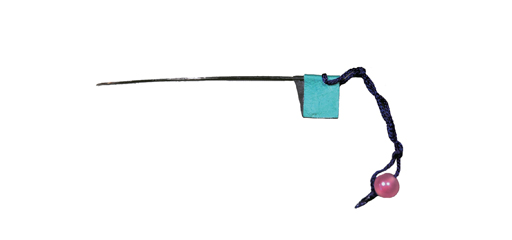 “Seseri”
“Seseri”
When igniting a fuse, the flame travels through a small hole called a touch hole and then ignites the gun powder inside the barrel. In matchlock guns, the momentum of the explosion fires the bullet. However, after several shots, the narrow 1.0 to 1.5 mm touch hole becomes blocked with soot, so a long tool called a “seseri” is used to clean it. Since there is a curve at the end of the touch hole, this strong, flexible material was used. During the Sengoku (1567-1603) and the Edo (1603-1868) periods, flexible metal was not available, so the baleen of the North Pacific right whale and the fin whale was prized for its flexibility and strength.
Products of whale teeth
What kind of teeth do whales have?
There are currently more than 70 species of toothed whales in the world. Depending on what they eat, the number and size of their teeth differ among species. While most mammals have teeth that vary in shape, whale teeth are all the same. The shape of their teeth tells us that they swallow their food without chewing.
The Uses of Whale Teeth
The most popular teeth which are used in whale products are those of sperm whales. Since they have holes in their teeth depending on their age and size, it makes it difficult to choose the right tooth for the right product. While the whale tooth industry still survives in Miyagi and Nagasaki, the scarcity and the cost of whale teeth makes it difficult to continue production. Today, modern materials like plastic are being used in place of whale teeth.
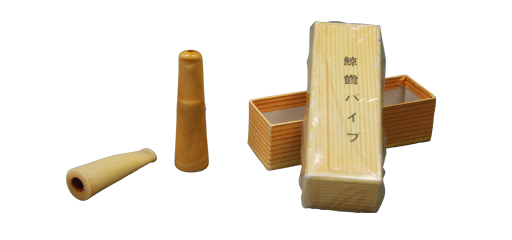 Whale Pipe
Whale Pipe
Whale Pipe
This pipe was made from a sperm whale tooth.
Hand-made pipes were popular among whalers in Taiji.
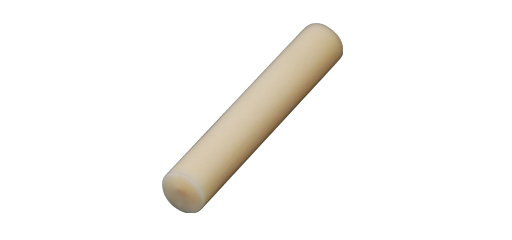 Material for Inkan (Stamps)
Material for Inkan (Stamps)
Material for Inkan (Stamps)
This inkan, or stamp, was made from a sperm whale tooth.
With their strength, durability, and beautiful ivory-like brilliance, inkans made from whale teeth are viewed as luxury items.
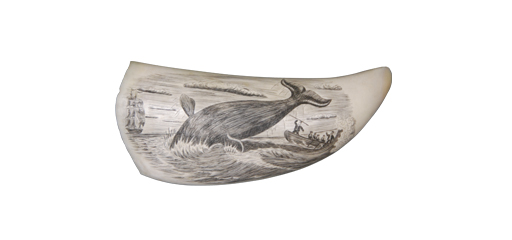 “Scrimshaw”
“Scrimshaw”
Among whalers, “Scrimshaw” is the tradition of carving the bones or teeth of sperm whales or other animals during their long voyages. Whalers carved pictures into the bone, brushed the surface with whale soot oil, and then polished them. They were then used as souvenirs for their family waiting back at home.
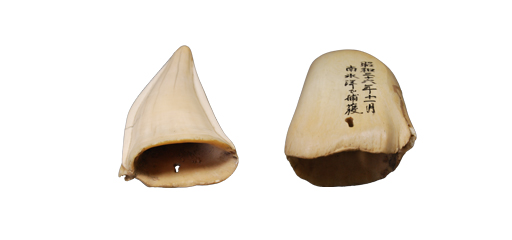 Vase
Vase
Vase
This is a unique vase made from a huge sperm whale tooth.
The note on the back reads “Caught in the Southern Sea in November, 1961 (Showa 36).”
 Penguin ornament
Penguin ornament
Penguin ornament
These are penguin figurines made from sperm whale teeth of different sizes.
A variety of figurines such as cranes, penguins, and flowers remain in Taiji.
 Dragon sculpture
Dragon sculpture
Dragon sculpture
The image of a rising dragon is carved on the surface of this sperm whale tooth.
Experience and skill was required to carve this intricate design onto the hard surface of the sperm whale tooth.
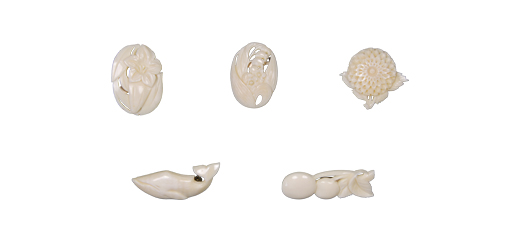 Brooch
Brooch
Brooch
There are brooches of flowers and whales which are made from sperm whale tooth.
“Sukashi” is the technique behind carving the tooth thin enough let light transfer through it, which requires a large amount of skill.
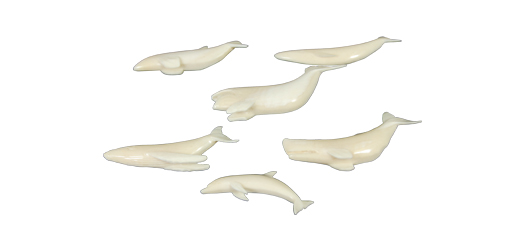 Sculpture of 6 whales
Sculpture of 6 whales
Sculpture of 6 whales
Six different whales are carved on this sperm whale tooth.
Detailed carvings of whales in frame. (Author: Mr. Toshio Hamano?)

 Pens stand
Pens stand
 “Kanzashi”, hair ornament
“Kanzashi”, hair ornament
 Paper knife
Paper knife
 “Cha-taku” or saucer
“Cha-taku” or saucer
 “Meimei-zara” - Serving Plates
“Meimei-zara” - Serving Plates
 Fishing rod
Fishing rod
 Ear pick
Ear pick
 “Mago-no-te” or backscratcher
“Mago-no-te” or backscratcher
 Shoehorn
Shoehorn
 Ornaments
Ornaments
 Awaji “Deku” or Wooden Puppet - Head (Courtesy of Mr. Yasuhiro Ueda)
Awaji “Deku” or Wooden Puppet - Head (Courtesy of Mr. Yasuhiro Ueda)
 “Ukai” or Cormorant Fishing “Tsumoso”
“Ukai” or Cormorant Fishing “Tsumoso”
 “Seseri”
“Seseri”

 Whale Pipe
Whale Pipe
 Material for Inkan (Stamps)
Material for Inkan (Stamps)
 “Scrimshaw”
“Scrimshaw”
 Vase
Vase
 Penguin ornament
Penguin ornament
 Dragon sculpture
Dragon sculpture
 Brooch
Brooch
 Sculpture of 6 whales
Sculpture of 6 whales





